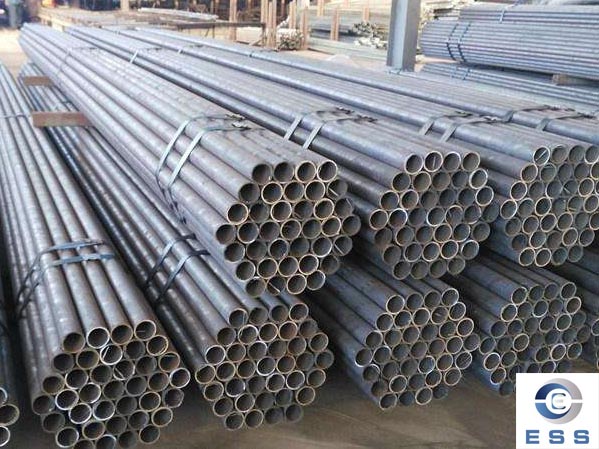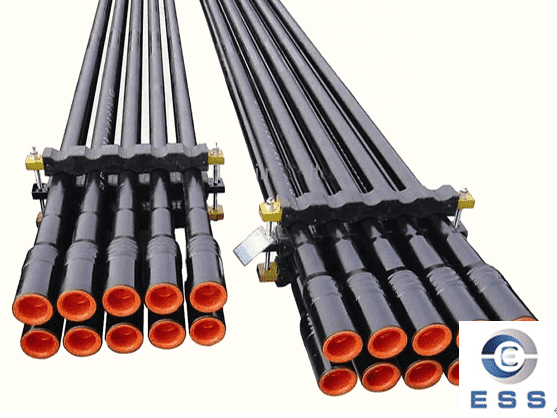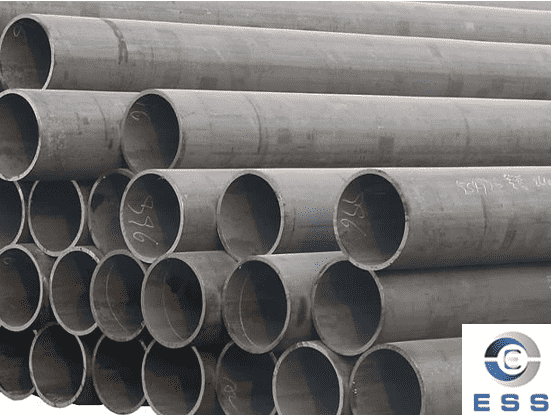Common defects and causes of cold drawn seamless steel pipes
In the smelting or hot working process, due to the influence of certain factors (such as non-metallic inclusions, gases, and process selection or improper operation, etc.) , and sometimes lead to material or product scrapping.
Looseness, bubbles, shrinkage cavity residues, non-metallic inclusions, segregation, white spots, cracks and various abnormal fracture defects in cold drawn seamless steel pipes can be found through macro inspection. The methods of macroscopic inspection are divided into two methods: acid leaching inspection and fracture inspection. A brief introduction to common macroscopic defects revealed by acid leaching is as follows:

1. Segregation
Formation reason:
During the casting and solidification process, some elements are aggregated due to selective crystallization and diffusion, resulting in uneven chemical composition. According to the different positions of the distribution, it can be divided into ingot type, center and point segregation.
Macro Features:
On the acid leached sample, when the segregation is erodible material or gas inclusions, it is dark in color, irregular in shape, slightly concave, flat at the bottom and has many dense microporous spots. If the resist elements are aggregated, it will be light-colored, irregularly shaped, and relatively smooth micro-convex spots.
2. Looseness
Causes of formation: During the solidification process, the steel fails to be welded during the hot working process due to the final solidification shrinkage of the low melting point material and the release of gas to generate voids. According to its distribution, it can be divided into two categories: central and general loose.
Macro Features:
On the lateral hot acid leaching surface, the pores are irregular polygons and pits with narrow bottoms, which usually appear within the segregation spots. In severe cases, there is a tendency to connect into a spongy shape.
3. Reasons for the formation of inclusions
① Foreign metal inclusions
Formation reason:
During the casting process, the metal strips, blocks and sheets fall into the ingot mold or the ferroalloy added at the end of smelting is not melted.
Macro Features:
On the etched sheet, there are many geometric shapes with sharp edges and a color that is significantly different from the surrounding.
② Foreign non-metallic inclusions
Formation reason:
During the pouring process, there is no slag floating out or the refractory material of the furnace lining and the inner wall of the pouring system that has been peeled off into the molten steel.
Macro Features:
Larger non-metallic inclusions are well identified, while smaller inclusions corrode and flake off, leaving small, circular holes.
4. Uplifted skin
Formation reason:
The semi-solidified film on the surface of the bottom casting ingot is involved in the molten steel.
Macro Features:
On the acid leaching sample, the color is different from the surrounding, and the shape is irregularly curved and narrow strips, and there are often oxide inclusions and pores around the periphery.
5. Shrinkage
Formation reason:
When the ingot or casting is poured, the liquid in the core cannot be replenished due to the volume shrinkage during final condensation, and macroscopic cavities are formed in the head of the ingot or casting.
Macro Features:
On the lateral acid leaching sample, the shrinkage cavity is located in the central part, and its surrounding is often a place with segregation, inclusion or looseness. Sometimes caves or crevices can be seen before etching, and after etching, the parts of the holes are darkened and appear as irregularly wrinkled holes.
6. Bubbles
Formation reason:
Defects caused by gases generated and evolved during ingot casting.
Macroscopic features: On the transverse specimen, there are cracks roughly perpendicular to the surface, with slight oxidation and decarburization nearby. The presence of subcutaneous bubbles below the surface is called subcutaneous bubbles, and the deeper subcutaneous bubbles are called pinholes. During the forging process, these unoxidized and unwelded pores are extended into thin tubes with small isolated pinholes in the cross section. The cross section is similar to the point-like segregation of the regular arrangement, but the darker color is the internal honeycomb bubble.
7. White Spot
Formation reason:
It is generally believed that it is the effect of hydrogen and structural stress, and the segregation and inclusions in the steel also have a certain influence, which is a kind of crack.
Macro Features:
On the transverse hot acid leaching sample, there are short and thin cracks. On the longitudinal fracture, there are coarse crystalline silver bright white spots.
8. Reasons for the formation of cracks in cold drawn seamless steel pipes:
Axial intergranular cracks: When the dendritic structure is serious, cracks will occur in the large-sized billet along the main branch of the dendritic structure and between the branches.
Internal cracking: cracking due to improper forging and rolling process.
Macroscopic features: On the cross section, the axial position cracks along the intergranular, showing a spider web shape, and radial cracking in severe cases.
9. Fold
Formation reason:
The surface scars of cold-drawn seamless steel pipes or steel ingots are uneven and the edges and corners of the tip are superimposed on the cold-drawn seamless steel pipe during forging and rolling, or ears are formed due to improper pass design or operation, and are stacked when continuing to roll. combined.
Macro Features:
Cold-drawn seamless steel pipe has an oblique crack with the surface of the steel on the transverse hot acid dipping sample, and there is serious decarburization nearby, and oxide scales are often contained in the crack.













 Eastern Steel Manufacturing Co.,Ltd not only improve product production and sales services, but also provide additional value-added services. As long as you need, we can complete your specific needs together.
Eastern Steel Manufacturing Co.,Ltd not only improve product production and sales services, but also provide additional value-added services. As long as you need, we can complete your specific needs together.










